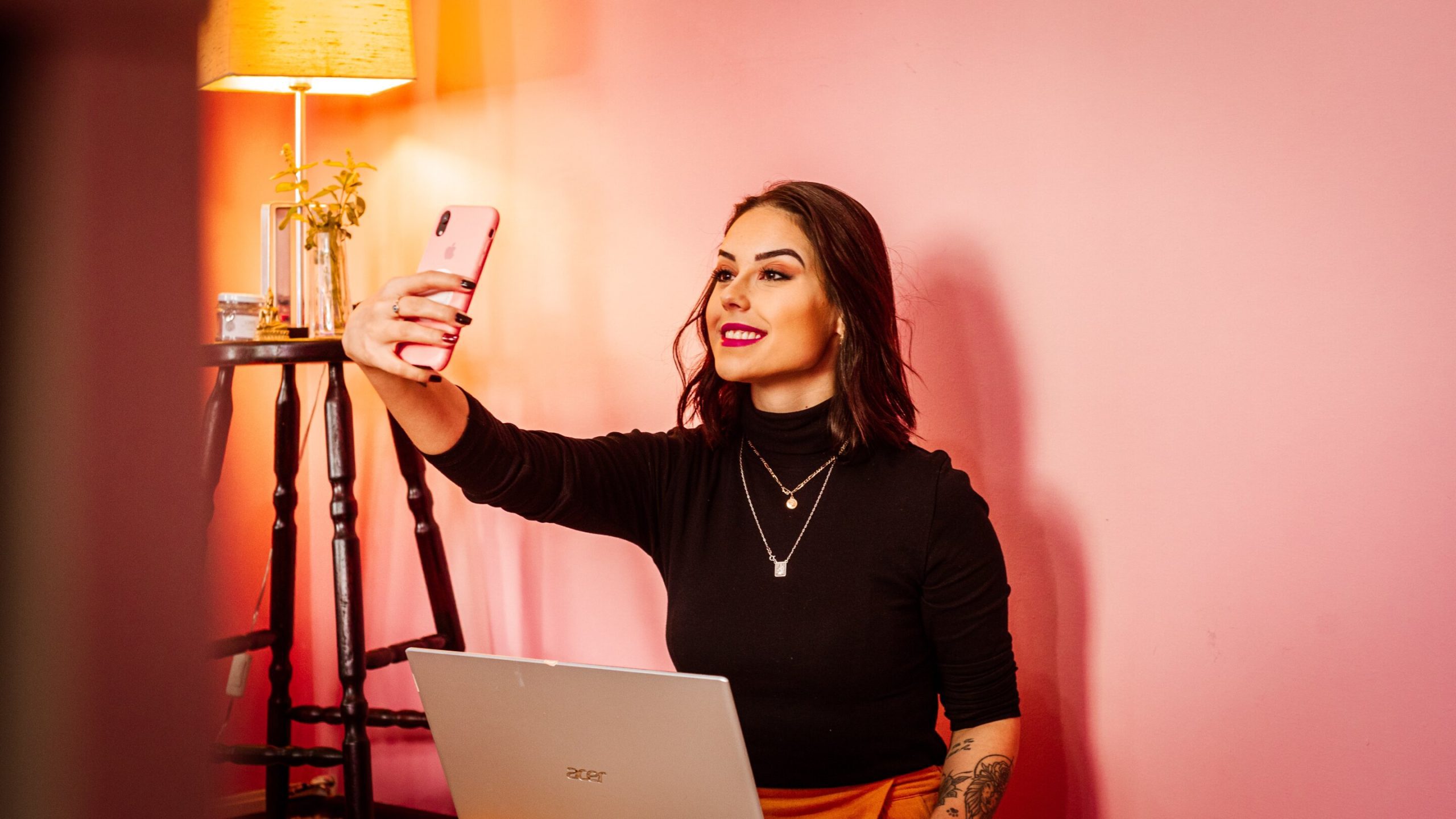

A YouTube personality takes a break from chatting about video games to talk about a web hosting service. An Instagram account devoted to beauty spotlights a new haircare product. A TikToker shouts out a fast-food sandwich to her fans. Anyone who uses social media has almost certainly seen influential figures—commonly referred to as influencers—and the brands that sponsor their posts.
The practice of influencer marketing has been in many companies’ advertising mixes for years but quantifying the best path to return on investment has traditionally been difficult, with most data proprietary to social platforms and agencies. With “Influencer Marketing Effectiveness,” the marketing department’s Jonathan Zhang and his coauthors leverage a partnership with a large Chinese influencer-marketing agency to gather data about how influencers’ followers interact with sponsored posts. It was one of the first efforts to provide a comprehensive and quantitative investigation at a relatively new form of marketing.
“Influencer marketing is a global phenomenon and brands are throwing tons of money at it,” Zhang said. “We have anecdotes of success here and there, but there’s never been a systematic assessment of what is the return on investment, what investment paid off and which ones were a dud.”
After sorting through countless interactions on social platforms, referencing brands’ spending on individual campaigns and analyzing influencers’ posts, audience and messaging, Zhang examined the characteristics of the influencers, the types of messages they send and the makeup of audience. Using social shares and reposts as a metric of a campaign’s success—final sales data was held by advertisers and unavailable to researchers—Zhang and his colleagues hope to shift the discussion away from the charisma-driven, gut-feeling decisions that often drive marketers’ choices.
“We’re trying to cut through the fluff because influencers, by definition, are very good at talking and very good at packaging themselves,” Zhang said. “So as a brand or any kind of sponsor, you look at this space, you’re like, “Everybody looks good, glamorous, and convincing!'”
How to choose the right influencer for a campaign
Zhang and his coauthors find more objective measures than glitz and glamor to help marketers identify influencers who are most likely to deliver results. First, they looked at the influencers themselves, evaluating post frequency, and number of followers. While findings support conventional wisdom that partnerships with influencers with more followers see more return on investment than those with fewer, Zhang discovered that post frequency may impact campaign results. Influencers who post infrequently don’t have enough presence on users’ feeds, and conversely, those who post too often also don’t connect with audiences as effectively.
Advertisers looking to maximize the return on investment on an influencer campaign should consider more than just their influencer’s behavior and reach. Digging deeper into the data, Zhang found that subtle differences in an influencer’s content and her audience makeup also impact a campaign’s effectiveness. Unsurprisingly, when goods and services being promoted match an influencer’s theme and audience profile, campaigns perform better than when there’s little affinity between the audience and the content.
Moving past that everyday wisdom, Zhang and his coauthors found that too much affinity between an influencer’s content or audience also reduce return on investment. He theorizes that drop-off in engagement can be chalked up to the difficulty of providing novel information to expert audiences.
“If you choose an influencer whose followers are burly guys who are into outdoors activities, then obviously your cosmetic brand will be a terrible fit—there is no resonance with the audience,” Zhang explained. “But if all of their followers are trendy young ladies who know everything about cosmetics, then they’ll wonder, ‘You know, this influencer is not telling us anything I didn’t already know.'”
The best messaging for social influencer campaigns
A successful influencer campaign requires more than mere carefully selecting a social media personality that aligns with marketing goals. As with traditional advertising, influencers’ framing of product messaging affects audiences’ reaction to them. Zhang discovered that social media users have different expectations of authenticity when viewing sponsored posts.
Campaigns that performed most successfully featured original content such as text and graphics created by the influencers themselves, rather than repurposing material created by marketers. While Zhang suggests providing key messaging points to influencers, giving them the license to authentically represent their own voice with the piece. That also includes granting influencers the ability to be honest about the product: Gushing, overly positive posts don’t deliver the same return on investment as more balanced and measured approaches that include product critique.
“If you’re an agency that is trying to coach influencers, our work can serve as a playbook on how to design messages,” he explained.
The research also discovered that introducing new products in an influencer campaign was less likely to achieve return on investment than when promoting established products.
Opening the black box
Most of the digital marketing world is guided by proprietary algorithms and internal processes that, by nature, are shielded from scrutiny. Because of this, marketers have had to rely on spotty third-party data or anecdotal evidence when planning influencer campaigns. Often, that led to spending decisions being made by gut instinct—a practice Zhang hopes to eliminate by helping advertisers develop best practices.
“This research is trying to cut straight through the fluff and let the hard numbers speak” Zhang said. “The influencer marketing space is an emerging area and there’s a lot of inefficiency and wasted resources from guesswork. We aim to fix this issue and use numbers to paint a compelling story.”
The research appears in the Journal of Marketing.
Celebrities vs influencers: New research determines a winner
Fine F. Leung et al, EXPRESS: Influencer Marketing Effectiveness, Journal of Marketing (2022). DOI: 10.1177/00222429221102889
Colorado State University
Citation:
Research finds most effective influencer marketing tactics (2022, May 19)
retrieved 19 May 2022
from https://phys.org/news/2022-05-effective-tactics.html
This document is subject to copyright. Apart from any fair dealing for the purpose of private study or research, no
part may be reproduced without the written permission. The content is provided for information purposes only.

